How turquoise is celebrated by Van Cleef & Arpels, Cartier and Bulgari: the stone’s modern fans include Emily Blunt, Eva Mendes and Richemont’s new CEO Nicolas Bos, but it has a centuries-long history

Bos says it’s been an important stone throughout Van Cleef & Arpels’ history. Three years ago it was used extensively in a Perlée collection centred on the use of turquoise.
“It’s been used quite a lot since the very early days of the house – the 1910s, 1920s. During the art deco [period] in particular, in the Egyptian revival period, turquoise was of course a very important stone,” he says. “Then we’ve used it on and off. And definitely in the period that was a very important to Van Cleef & Arpels, the 60s and 70s. There was a lot of revisitation of Eastern, Indian, Persian jewellery. And the idea – and it has always been the idea for this brand – is really often about colour and movement. We really had a very, very strong tradition with that, which we love to keep.”
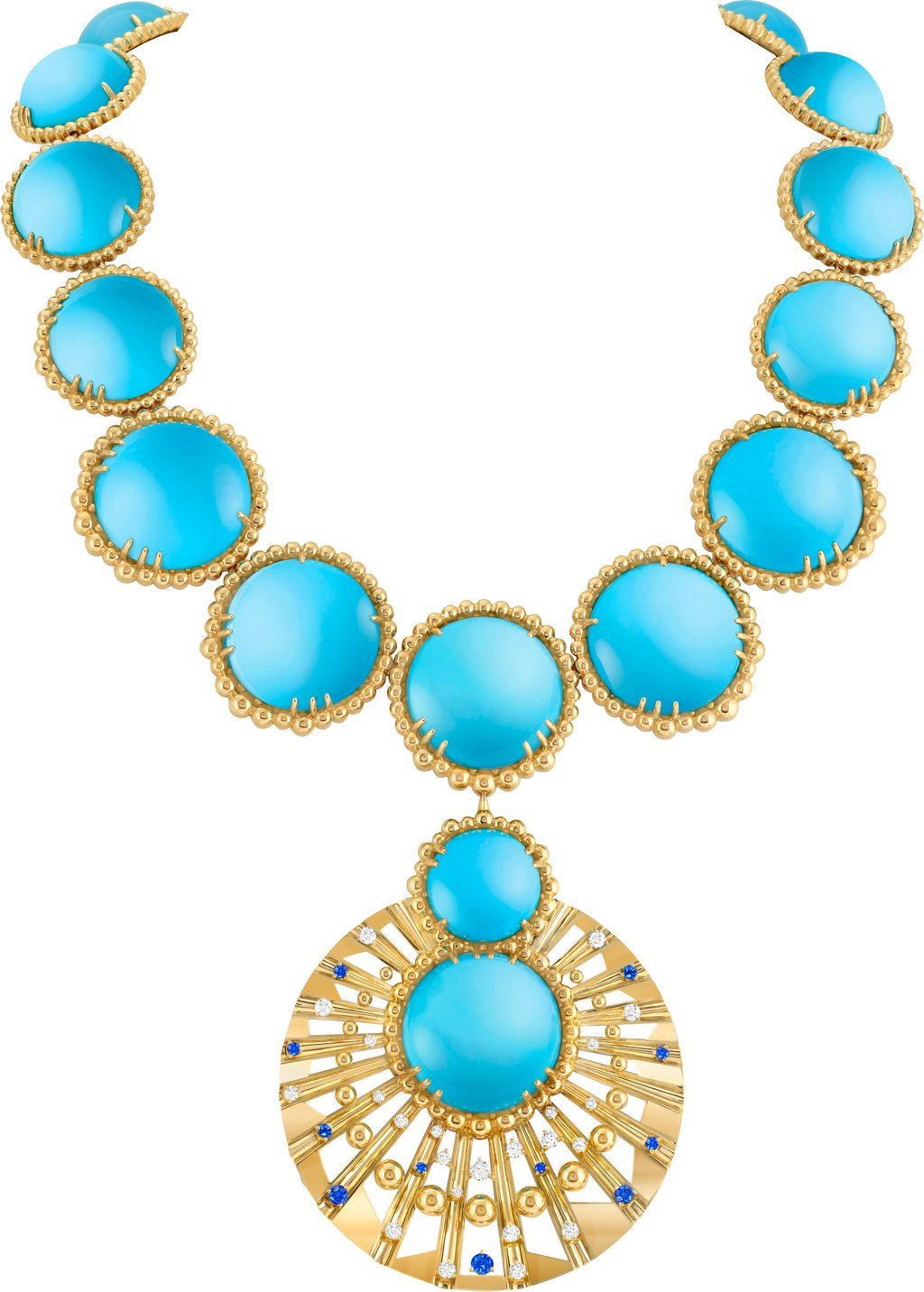
Cartier also has a long history of using turquoise in its creations, harking back again to the Egyptian Revival era of the 1920s. This was a period that included pieces such as the Cole Porter Egyptian suite, featuring a 1926 Scarab belt buckle brooch and a 1928 Eye of Horus bracelet with diamonds and cabochon sapphires.
Turquoise also made an appearance in Bulgari’s 2023 Mediterranea high jewellery range. Creative director Lucia Silvestri told Town & Country magazine at the time, of an emerald and turquoise medallion in the collection, that it was “a mix of the ancient and the modern … That’s very Bulgari”.
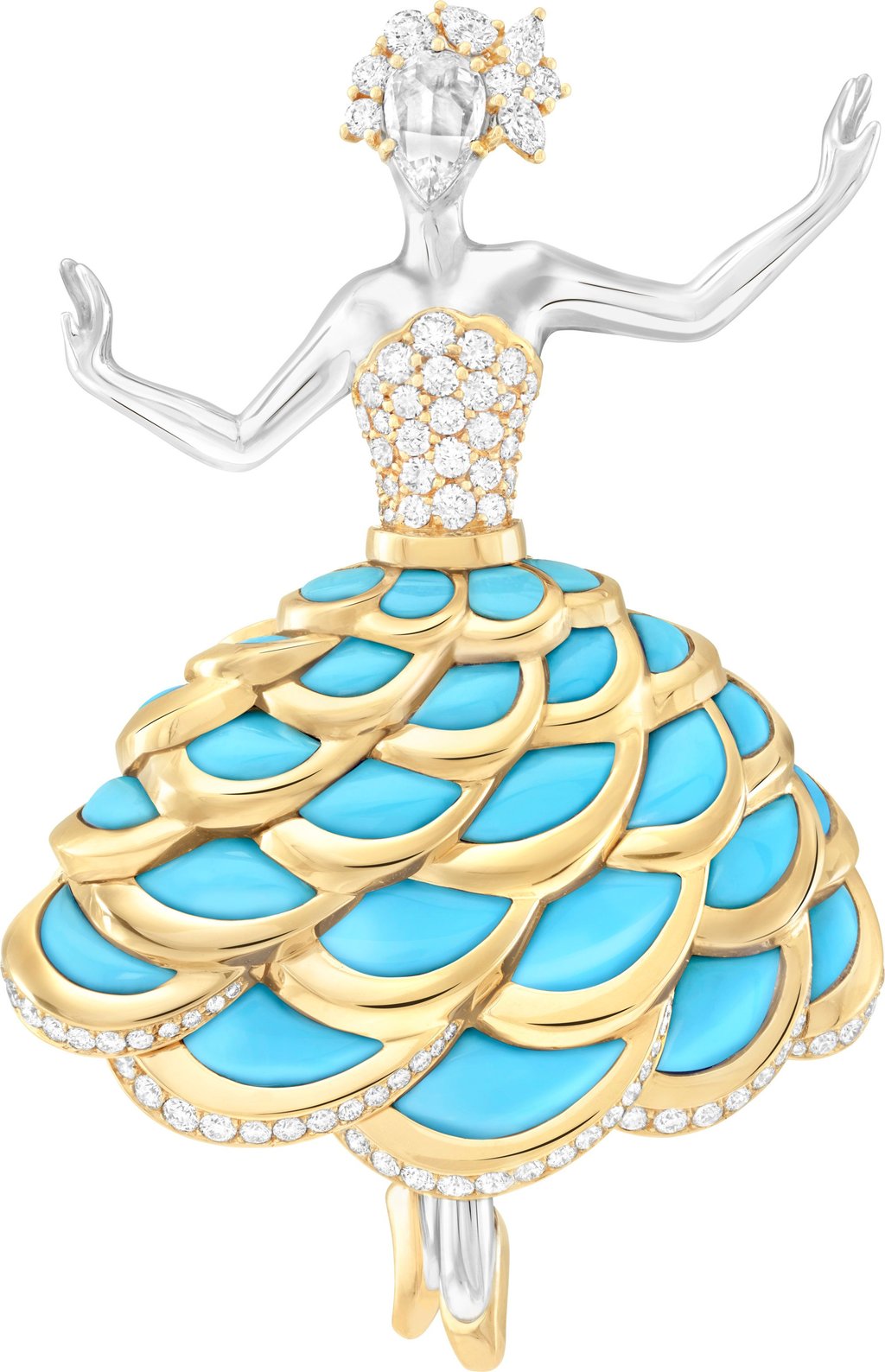
Turquoise has long been an important stone in many cultures, including Native Americans who believed it brought protection, luck and abundance. Polo Ralph Lauren’s recent collaboration with Native American textile artist and skateboarder Naiomi Glasses features turquoise-embellished accessories such as belts and bracelets.
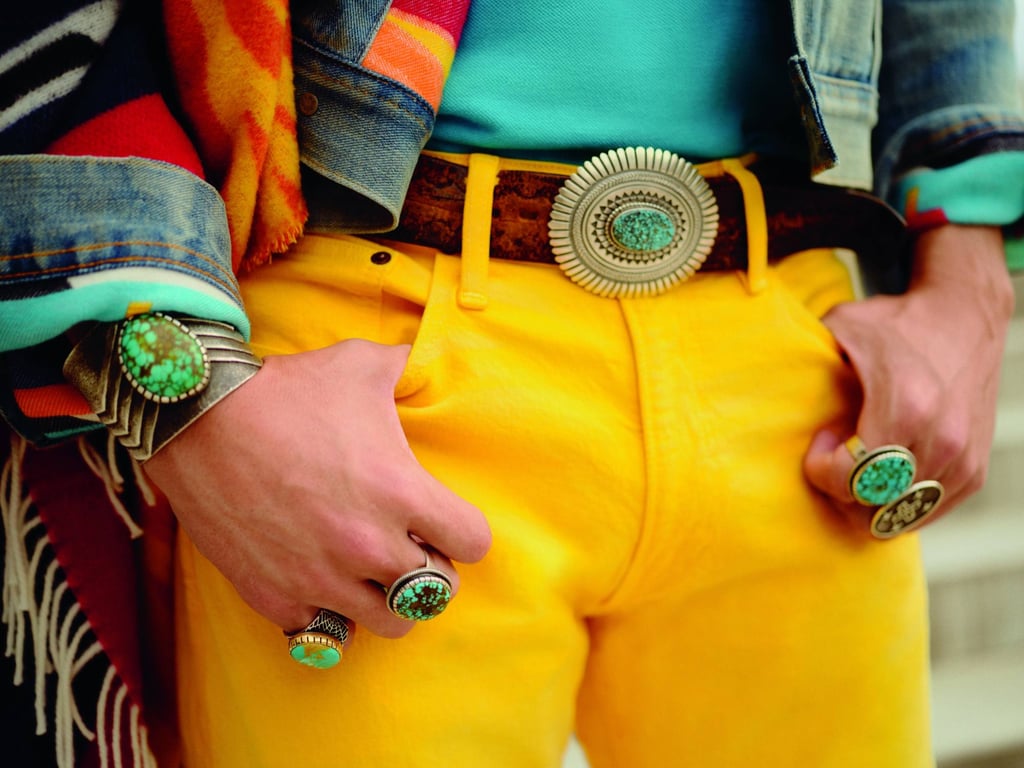
French jeweller Yvonne Léon loves using the stone for these same reasons. “Beyond its aesthetic appeal, turquoise has numerous benefits. Believed to ward off negative energies, it also offers soothing and protective qualities,” she says.
But it’s the hue that she finds most compelling. “I incorporate turquoise stones into my jewellery for their captivating colour. [Its] allure lies in its individuality; the blue, blue-green intensity varies from stone to stone, which makes it unique,” she says.
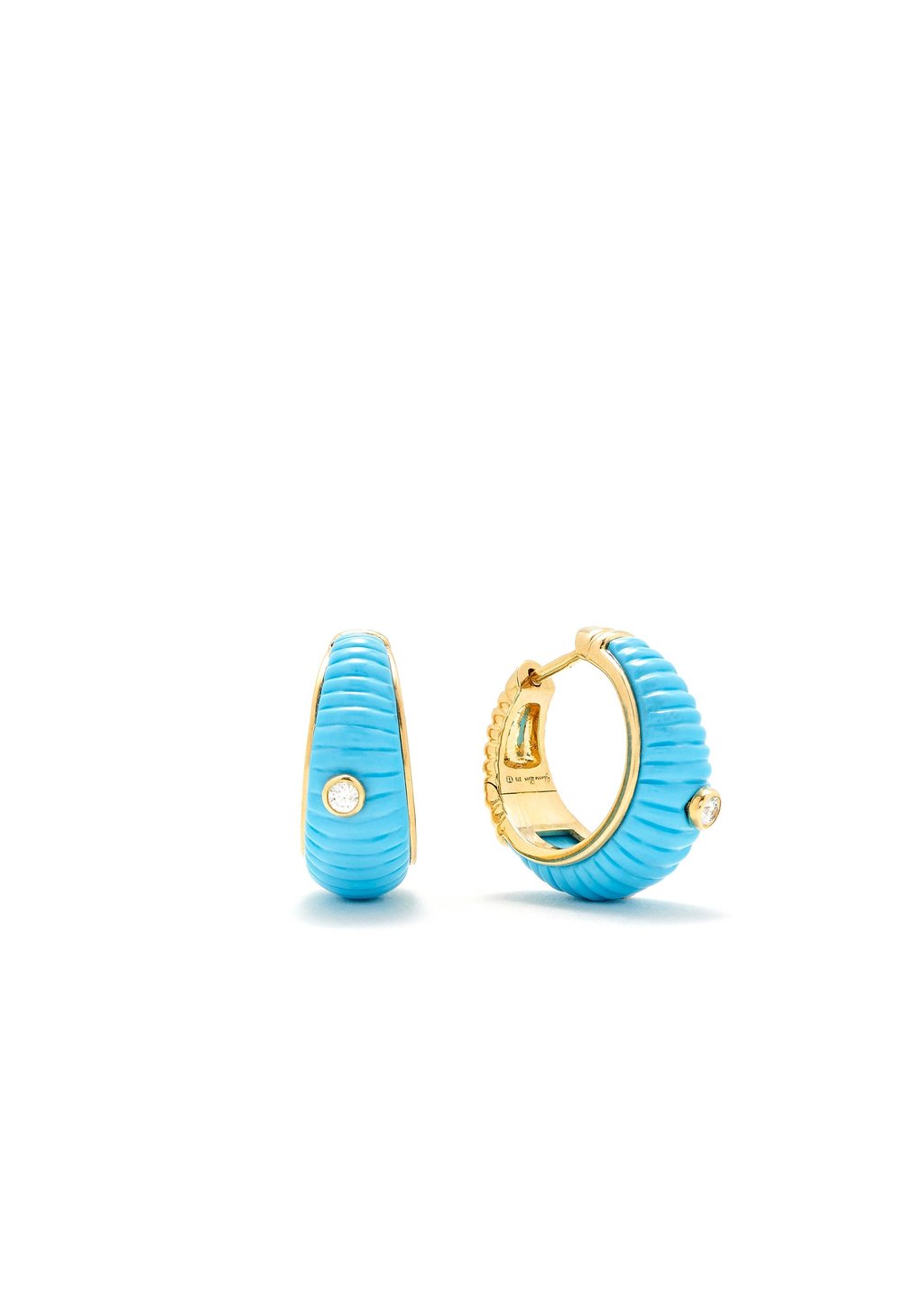
“You’ll find this enchanting stone featured prominently across several of my collections. I enjoy pairing it with gold in various techniques – such as the Berlingot and Torsade styles – to create visually striking pieces. The vibrant hue of turquoise is a reminder of summer, the serene ocean and clear blue skies, which is why we like to use it in our La Plage collection.”
Vintage pieces in turquoise is likely to only grow in value. As Bos notes from his time at Van Cleef & Arpels, the stone is becoming more difficult to source with most of the main suppliers shut down, including a major source in Arizona, after a flood a few years ago.
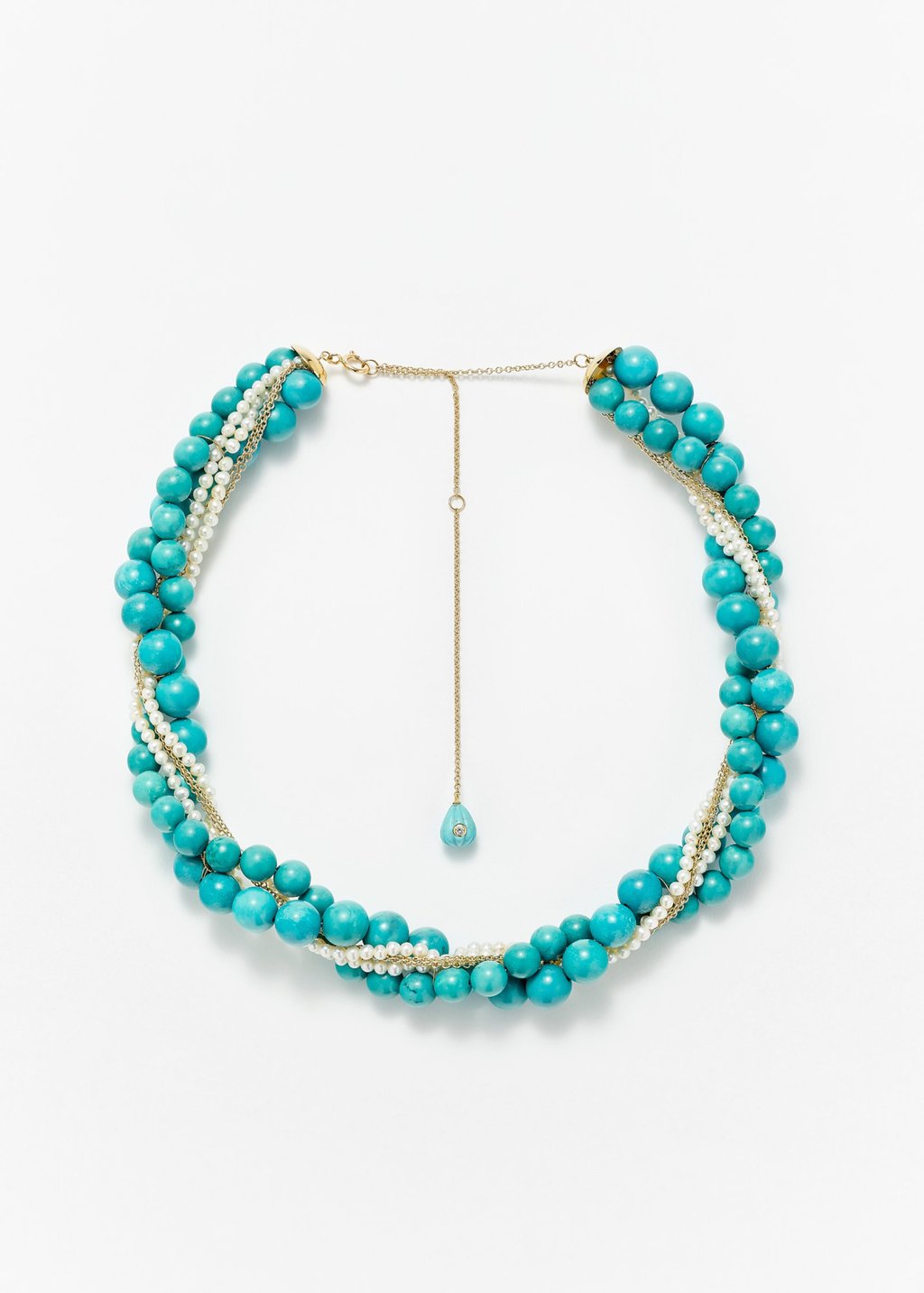
“We are mostly working out of very old inventories and it’s becoming a rare piece. It’s funny because when you look at the Alhambra collection, for instance, that used to exist in turquoise back in the 70s, 80s, now the pieces in turquoise are among the most sought-after at auction. We cannot produce them any more,” he adds.
Moreover, the stone pairs exceptionally well with other gems to create vibrancy in jewellery – the kind of knockout pieces that may well go down in history.
“Turquoise is a fantastic colour and a fantastic stone, by itself or in contrast or combination with other stones, because it’s an opaque stone,” Bos notes. “So when you associate it with transparent or faceted stones, you have a fantastic play on volume.”
Source link